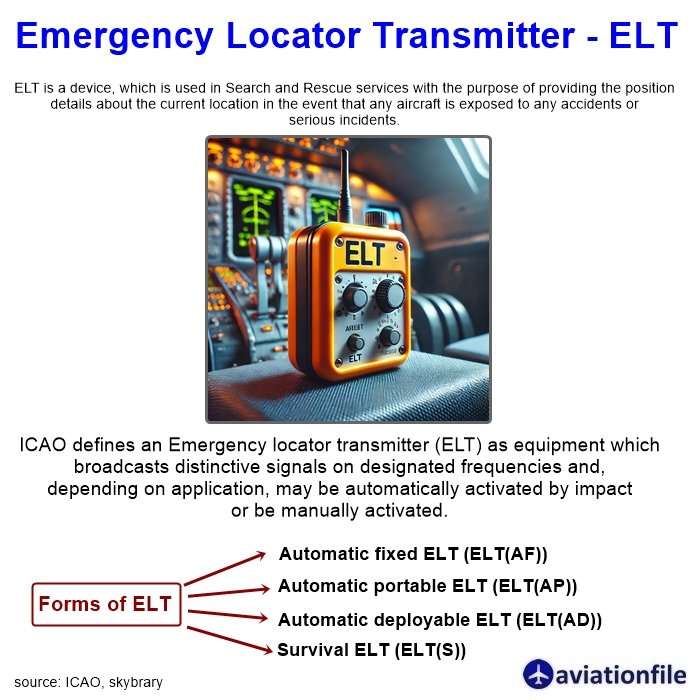Emergency Locator Transmitter (ELT): A Complete Guide
An Emergency Locator Transmitter (ELT) is a crucial safety device in aviation. It helps rescuers locate an aircraft during emergencies, especially after a crash. In this guide, we cover how ELTs work, the different types available, and also why they are essential for aviation safety (aviation accidents – aviationfile).
What is an Emergency Locator Transmitter?
An Emergency Locator Transmitter (ELT) is a radio device that transmits distress signals when an aircraft crashes or experiences a significant impact. Satellites and ground stations pick up the signal, helping search-and-rescue teams quickly locate the aircraft.
How Does an ELT Work?
Sensors equipped in ELTs detect high impacts, such as a crash or hard landing. Once triggered, they transmit a signal on specific frequencies—typically 121.5 MHz or 406 MHz. These signals are relayed by satellites and also help pinpoint the aircraft’s location for rescuers (FAA, Skybrary).
Types of ELTs
There are three main types of ELTs, each designed for different scenarios:
1. Automatic Fixed ELT (AF): This type is permanently mounted on the aircraft. It activates automatically upon impact and begins transmitting distress signals.
2. Automatic Portable ELT (AP): These ELTs can be removed from the aircraft. The crew can manually activate and operate the device if the plane is damaged.
3. Survival ELT (S): Survival ELTs are found in life rafts or emergency kits and can be manually activated by survivors after a crash or ditching.
Why the 406 MHz ELT is Important
Modern ELTs use the 406 MHz frequency, which is monitored by the Cospas-Sarsat satellite system. This frequency allows for more accurate tracking, often pinpointing the aircraft’s location within 2 kilometers or less. Older 121.5 MHz ELTs are no longer monitored by satellites as of 2009, making the 406 MHz models far more reliable for quick rescue operations.
ELT Maintenance and Regulations
Regular ELT maintenance is essential for ensuring the device functions properly in an emergency. Civil aviation regulations require aircraft to be equipped with functional ELTs, and operators must routinely check and also replace ELT batteries as per the manufacturer’s guidelines. Battery life typically ranges from 1 to 5 years.
The Role and Limitations of ELTs in the Air France Flight 447 Crash
The crash of Air France Flight 447 in 2009 is a well-known aviation accident where the aircraft’s Emergency Locator Transmitter (ELT) did not help in locating the wreckage. Although the aircraft was equipped with an ELT, it failed to transmit a signal due to the severe impact and subsequent submersion in the Atlantic Ocean. ELTs often struggle to function underwater, and in this case, the depth of the ocean and other conditions meant the signal was never received by search-and-rescue teams.
This accident highlighted the limitations of ELTs in certain situations, particularly when an aircraft crashes in remote ocean areas. As a result, the International Civil Aviation Organization (ICAO) and other bodies worked to improve distress tracking systems following this incident, focusing on technologies that can transmit location data even if the aircraft is in distress or submerged (Wikipedia)(Kreindler & Kreindler LLP)(Aerospace Testing International).

Conclusion
Emergency Locator Transmitters are a vital component of aviation safety. By automatically transmitting distress signals, ELTs significantly reduce search-and-rescue times and also increase the chances of survival. Properly maintain and update your aircraft’s ELT to ensure the best protection.


